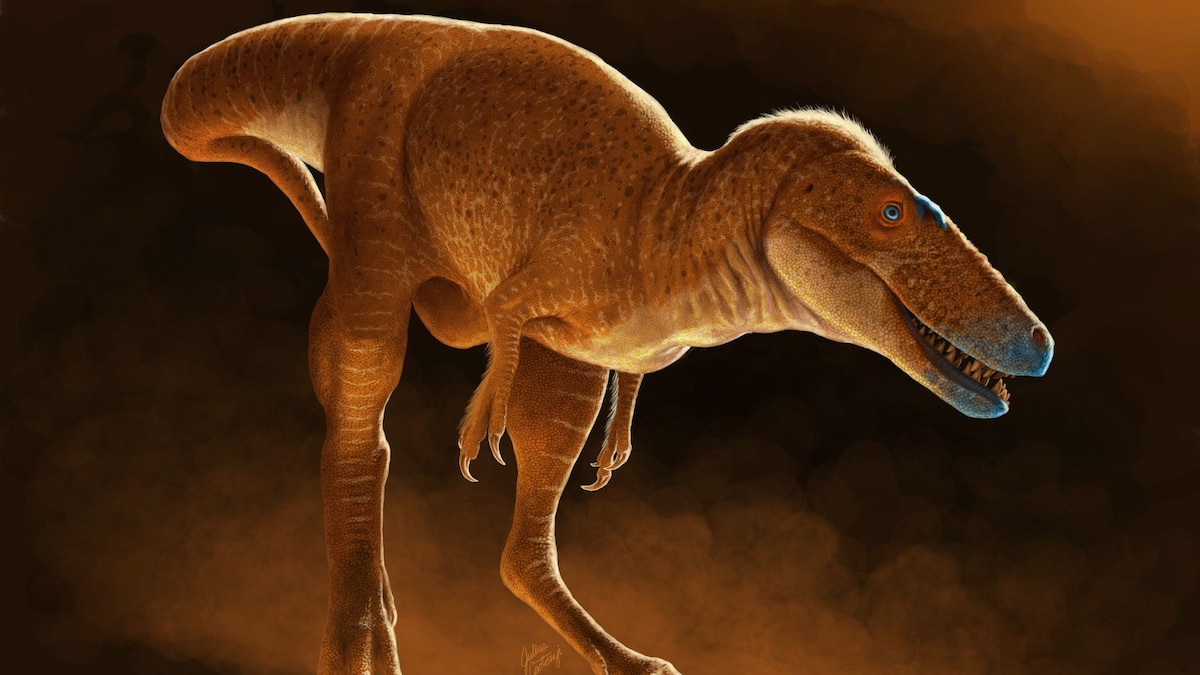Now Reading: Scientists Unveil ‘Dragon Prince’ Dinosaur, Ancestor of T. Rex
-
01
Scientists Unveil ‘Dragon Prince’ Dinosaur, Ancestor of T. Rex
Scientists Unveil ‘Dragon Prince’ Dinosaur, Ancestor of T. Rex

Swift Summary
- Discovery: A new tyrannosaur species, Khankhuuluu mongoliensis (“dragon prince from Mongolia”), has been identified from partial skeletons found in Mongolia.
- Size and Age: Measuring 13 feet long, it lived approximately 86 million years ago during the Cretaceous period.
- Evolutionary Insight: The slender dinosaur resembles juvenile Tyrannosaurus rex and provides important clues about tyrannosaurs’ evolutionary lineage. It had round eye sockets, blade-like teeth, and shallow jaws for biting quickly rather than crushing hard.
- Study Findings: Researchers propose Khankhuuluu dispersed from Asia to North America via a land bridge. Its discovery traces how tyrannosaurs diversified into smaller prey-chasers and larger apex predators across various habitats before evolving into apex species like T. rex.
- Ancestry of T. rex: The study suggests the direct ancestors of T. rex evolved in Asia before returning to North America around 73-67 million years ago.
Indian Opinion Analysis
The scientific discovery of Khankhuuluu mongoliensis exemplifies the dynamic interplay between continents shaping evolutionary pathways over millions of years-a reminder that geographical shifts profoundly influenced ancient biodiversity as they do today. For India, this research underscores the historical importance of deep-time geological connections such as land bridges which have shaped evolutionary patterns globally.
India has its share of significant dinosaur discoveries frequently enough linked to paleontological hotspots like Gujarat or Madhya Pradesh-highlighting India’s contribution toward reconstructing Earth’s prehistoric ecosystems. As global discoveries chart complex evolution stories such as that involving tyrannosaurs or previous migrations across Asia-North america land connections,collaborative cross-border research models grow ever essential for expanding India’s reach in paleobiological sciences.
























